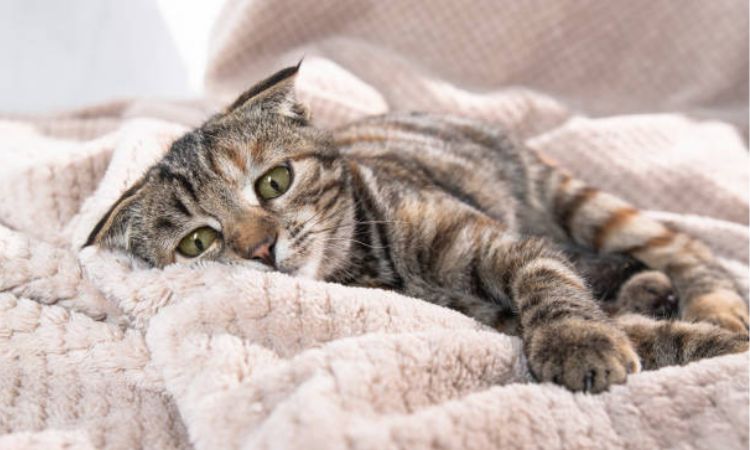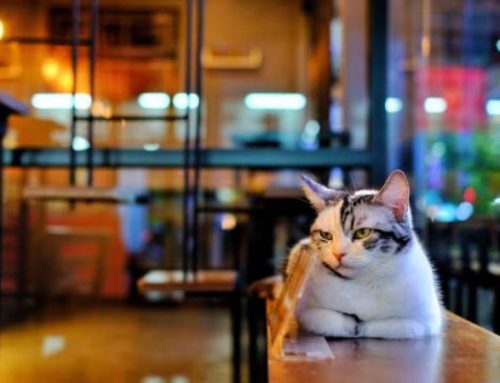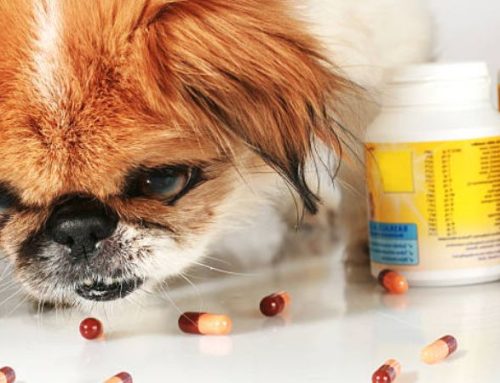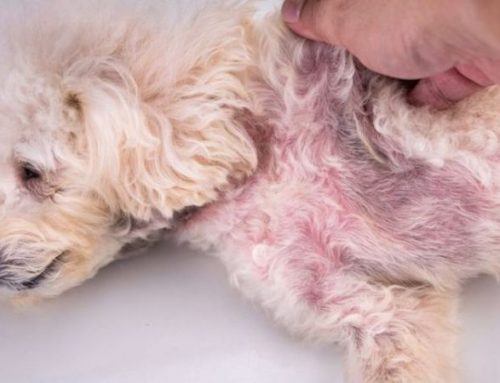Even the most independent and playful cats aren’t immune to feelings of sadness. Changes in their environment, the loss of a beloved companion, or even a sudden move can leave your feline friend acting withdrawn, less playful, or unusually quiet.
But how do you tell if your cat is truly depressed, and what can you do to help? From subtle behavioral shifts to practical ways to lift their spirits, understanding your cat’s emotional world is the first step toward helping them feel like themselves again.
Depressed Cat Symptoms: How to Spot the Signs
Cats may seem independent and resilient, but they are just as capable of experiencing emotional struggles as humans. Just like people, cats can suffer from stress, anxiety, and depression, often triggered by illness, injury, changes in their environment, or the loss of a family member or companion. Recognizing the signs of depression early is crucial for helping your feline friend regain their mental and physical well-being.

1. Changes in Vocalization
Cats communicate primarily through their voices. A depressed cat may start to meow less frequently than usual, or their meows may become low, mournful, or unusual in tone. Conversely, a typically quiet cat might suddenly become excessively vocal. Both extremes—unusually quiet or excessively noisy—can indicate emotional distress.
2. Altered Body Language
Your cat’s posture often reveals their mood. Depressed cats may flatten their ears, tuck their tails, or raise their fur when feeling uneasy. They may appear restless, slouched, or withdrawn. Paying attention to these subtle body cues helps you understand your cat’s emotional state.
3. Aggression or Fearfulness
Emotional distress can make cats more reactive. They may hiss, growl, swat, or retreat when approached. Heightened aggression or fear is often a sign that a cat is feeling anxious, unsettled, or sad.
4. Increased Clinginess or Stranger Anxiety
Cats suffering from depression may seek constant attention and affection from their owners, becoming unusually clingy. They may also become more wary of strangers or lose interest in playing and interacting with household members or other pets. A previously curious or playful cat withdrawing from their environment could be experiencing depression.
5. Changes in Sleeping Patterns
Cats naturally sleep between 12–16 hours a day, but a depressed cat may sleep even more, often in unusual locations. Prolonged inactivity or changes in nap routines can be a clear warning sign of mental distress.
6. Reduced Appetite
Loss of appetite or a sudden disinterest in favorite treats and meals can indicate depression. Cats may eat less or show no enthusiasm for food they previously enjoyed.
7. Litter Box Issues
Depressed cats sometimes urinate outside the litter box, even if they’ve always been well-trained. This can be a coping mechanism, as the scent of their own urine can provide temporary comfort. Frequent accidents may occur in bedrooms, kitchens, or other areas of the home.
8. Excessive Grooming or Scratching
Cats often groom or scratch to relieve stress. A depressed cat may overdo this behavior, leading to matted fur, hair loss, or damaged furniture. This repetitive action is a physical manifestation of mental strain.
9. Loss of Interest in Activities
A major sign of feline depression is withdrawal from activities your cat used to enjoy, such as playing with toys, exploring their environment, or interacting with family members or other pets. This lack of engagement mirrors the human symptom of losing interest in once-pleasurable activities.
Why Is My Cat Depressed? Common Causes
Loss of a Companion or Human (Grief)
Cats are more social and emotionally aware than many people realize. When a feline or human companion leaves, whether due to death, moving away, or long-term absence, cats can experience genuine grief.
- Depressed cat after another cat’s death: Cats often form close bonds with other pets in the household. The loss of a feline companion can lead to withdrawal, reduced appetite, excessive sleeping, or changes in grooming habits.
- Can cats get depressed after losing a human? Absolutely. Cats bond with humans as part of their social environment. The death, absence, or extended separation from a loved one can trigger sadness and behavioral changes.
- Changes in home dynamics: Beyond the loss itself, the altered environment can contribute to stress. New routines, missing interactions, or changes in daily attention can intensify a cat’s depressive state.
Recognizing grief in cats is essential, as it can affect their physical health, appetite, and overall well-being.

Major Environmental Change (Moving)
Significant changes in a cat’s environment are a frequent cause of stress and depression. Cats are territorial animals, and sudden alterations to their familiar surroundings can be overwhelming.
- Moving house: Relocating to a new home often causes disorientation and anxiety. The stress of adjusting to new spaces, smells, and sounds can lead to withdrawal, hiding, or decreased activity.
- Home renovations: Even temporary disruptions such as construction or remodeling can disturb a cat’s routine and sense of safety.
- Introduction of new family members or pets: A new pet or household member can upset the established social order, triggering jealousy, anxiety, or depressive behaviors.
Providing familiar items, maintaining routine, and slowly introducing changes can help your cat cope with these transitions.
Separation Anxiety and Owner Schedule Change
Cats form attachments to their owners and can experience emotional distress when these bonds are disrupted.
- Can cats get depressed when their owner leaves? Yes, but it’s important to distinguish between temporary loneliness and chronic stress. Missing an owner occasionally is normal; however, prolonged anxiety, excessive vocalization, destructive behavior, or refusal to eat may indicate genuine separation anxiety.
- Schedule changes: Alterations in your daily routine, such as longer work hours, frequent travel, or sudden absence, can affect your cat’s mental state. Cats thrive on consistency, and unexpected changes can lead to confusion, stress, or depression.
Maintaining a predictable schedule, providing enrichment activities, and using interactive toys or puzzle feeders can reduce stress during your absence.
Underlying Medical Conditions (The Hidden Cause)
Sometimes, what appears to be depression is actually a manifestation of an underlying health issue. Cats are experts at masking pain, so subtle changes in behavior can be your only warning sign.
- Pain and discomfort: Conditions like arthritis, dental disease, or injuries may cause your cat to become lethargic, withdraw from social interaction, or lose interest in favorite activities.
- Chronic illnesses: Diseases such as kidney issues, thyroid disorders, or infections can influence mood and energy levels. A sudden decrease in appetite, increased sleep, or changes in grooming can be red flags.
If your cat exhibits persistent signs of sadness or behavioral changes, a thorough veterinary examination is critical to rule out medical causes. Addressing the root problem ensures both physical and mental well-being.
10 Ways to Help Your Cat Now
Seeing a beloved cat acting withdrawn, lethargic, or unusually clingy can be distressing. Depression in cats is real, and as a responsible pet owner, taking swift and thoughtful action can help your feline companion recover their happiness. Here’s a practical, step-by-step plan to support your cat’s emotional well-being.
1. Prioritize the Vet Visit
The first and most crucial step is to rule out medical issues. Pain, infections, dental problems, kidney disease, arthritis, and other underlying conditions can mimic depression. A thorough veterinary examination ensures that your cat isn’t suffering from an undiagnosed health problem. Blood work, physical exams, and sometimes imaging may be necessary to uncover hidden causes. Only once medical concerns are addressed can behavioral or emotional interventions be fully effective.
2. Restore Routine
Cats are creatures of habit. Sudden changes in feeding times, play schedules, or sleeping arrangements can increase stress. Maintaining a predictable daily routine—including meals, play sessions, and quiet time—provides reassurance and stability. Even small consistencies, like petting your cat at the same time each evening, can reinforce a sense of security.
3. Environmental Enrichment
Depression in cats often stems from boredom or lack of stimulation. Expanding your cat’s environment can spark interest and mental engagement. Add vertical spaces such as cat trees, shelves, or window perches to encourage exploration. Puzzle feeders, interactive toys, and rotating toys on a regular schedule keep the mind sharp and prevent stagnation. Even opening a new view to the outside world or introducing a safe sunlit spot can make a noticeable difference.

4. Scent Therapy
Cats are highly sensitive to smells, and pheromones can profoundly affect their mood. Using products like Feliway diffusers or sprays can create a calming environment, reduce anxiety, and promote emotional balance. Strategic placement in areas where your cat spends the most time maximizes the effect. These scents simulate natural “feel-good” signals that can reassure a stressed or grieving cat.
5. Targeted Play Sessions
Active engagement through play helps mimic natural hunting behaviors, releasing endorphins and reducing stress. Use wand toys, laser pointers, or toys that simulate prey movement to encourage stalking, pouncing, and chasing. Short, frequent interactive sessions work better than long, infrequent playtimes. Tailoring play to your cat’s age and energy level ensures it’s stimulating without overwhelming them.
6. Comfort and Connection
Physical touch and quiet companionship can provide immense emotional support. Set aside dedicated moments each day to sit with your cat, gently petting or brushing them. Activities like quietly watching TV together, reading aloud, or sitting in the same room reinforce safety and belonging. Even independent cats benefit from knowing their guardian is consistently present and attentive.
7. Address Loss Gradually
If your cat is grieving a companion—human or animal—sensitive handling is key. Gradually removing items that belonged to the deceased while introducing comforting items, such as a blanket with the familiar scent, can ease the transition. Avoid rushing the process. Some cats benefit from keeping a familiar item nearby as a “memory scent” to help them process the loss.
8. Fight Boredom
Depressed cats often become disinterested when their environment is static. Rotate toys regularly to maintain novelty, introduce treat-dispensing puzzles, and provide climbing or hiding spaces to engage their mind and body. Encouraging problem-solving and exploration reduces boredom, stimulates curiosity, and boosts confidence.
9. Prepare for Absence
Separation can worsen depression and anxiety. Practice short absences and keep departures and returns low-key to minimize stress. Avoid dramatic gestures or prolonged goodbyes, as these can heighten worry. Gradually extending alone time while providing enrichment—like puzzle feeders or window perches—helps cats develop confidence and reduces separation-related depression.
10. Consult a Behaviorist
When home interventions aren’t enough, a certified veterinary behaviorist or animal psychologist can provide tailored solutions. Professional guidance may include behavioral modification strategies, structured routines, or, in some cases, psychoactive medications to help manage anxiety and depression. Early consultation ensures that any chronic behavioral or emotional issues are addressed effectively before they escalate.






